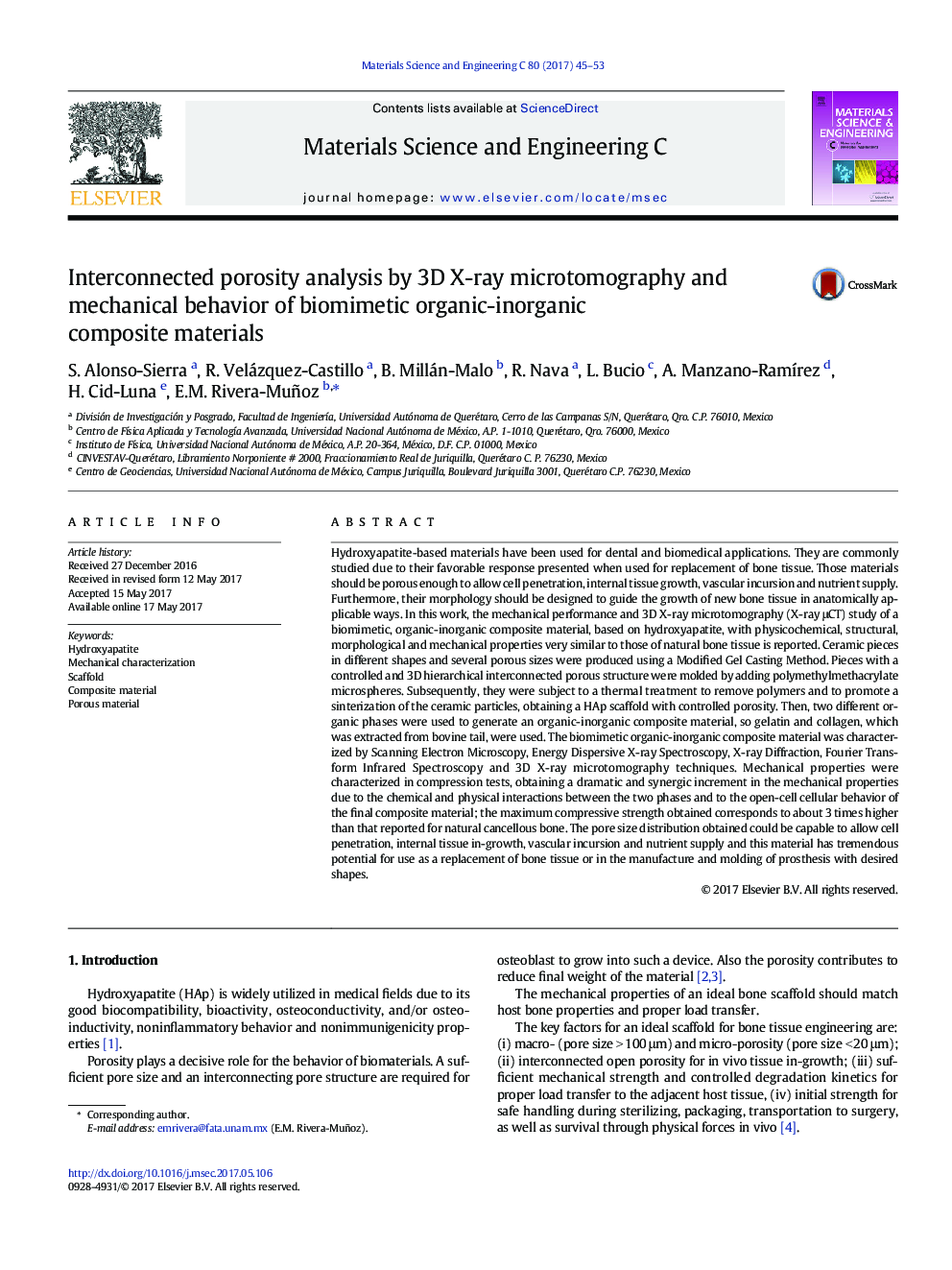| کد مقاله | کد نشریه | سال انتشار | مقاله انگلیسی | نسخه تمام متن |
|---|---|---|---|---|
| 5434293 | 1509141 | 2017 | 9 صفحه PDF | دانلود رایگان |

- X-ray microtomography was used to study the interconnected porosity of the HAp-based, organic-inorganic composite material.
- This material has physicochemical, structural and mechanical properties similar than those present in natural bone tissue.
- Pore size could be capable to allow cell penetration, internal tissue in-growth, vascular incursion and nutrient supply.
- A dramatic and synergic increment in the mechanical properties of the final composite material was achieved.
- The maximum compressive strength obtained corresponds to about 3 times higher than that reported for natural cancellous bone.
Hydroxyapatite-based materials have been used for dental and biomedical applications. They are commonly studied due to their favorable response presented when used for replacement of bone tissue. Those materials should be porous enough to allow cell penetration, internal tissue growth, vascular incursion and nutrient supply. Furthermore, their morphology should be designed to guide the growth of new bone tissue in anatomically applicable ways. In this work, the mechanical performance and 3D X-ray microtomography (X-ray μCT) study of a biomimetic, organic-inorganic composite material, based on hydroxyapatite, with physicochemical, structural, morphological and mechanical properties very similar to those of natural bone tissue is reported. Ceramic pieces in different shapes and several porous sizes were produced using a Modified Gel Casting Method. Pieces with a controlled and 3D hierarchical interconnected porous structure were molded by adding polymethylmethacrylate microspheres. Subsequently, they were subject to a thermal treatment to remove polymers and to promote a sinterization of the ceramic particles, obtaining a HAp scaffold with controlled porosity. Then, two different organic phases were used to generate an organic-inorganic composite material, so gelatin and collagen, which was extracted from bovine tail, were used. The biomimetic organic-inorganic composite material was characterized by Scanning Electron Microscopy, Energy Dispersive X-ray Spectroscopy, X-ray Diffraction, Fourier Transform Infrared Spectroscopy and 3D X-ray microtomography techniques. Mechanical properties were characterized in compression tests, obtaining a dramatic and synergic increment in the mechanical properties due to the chemical and physical interactions between the two phases and to the open-cell cellular behavior of the final composite material; the maximum compressive strength obtained corresponds to about 3 times higher than that reported for natural cancellous bone. The pore size distribution obtained could be capable to allow cell penetration, internal tissue in-growth, vascular incursion and nutrient supply and this material has tremendous potential for use as a replacement of bone tissue or in the manufacture and molding of prosthesis with desired shapes.
Journal: Materials Science and Engineering: C - Volume 80, 1 November 2017, Pages 45-53